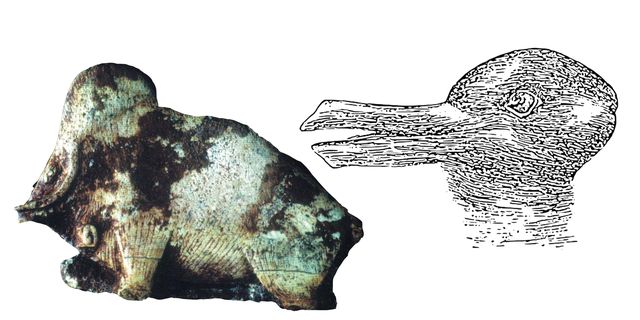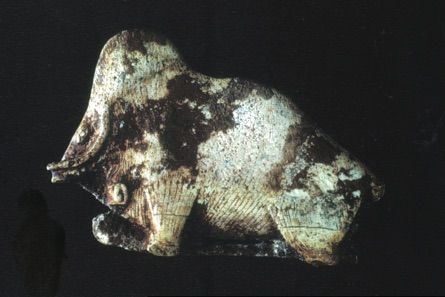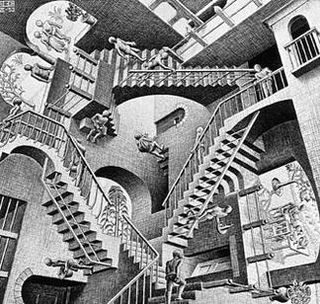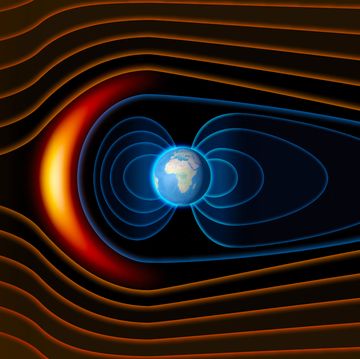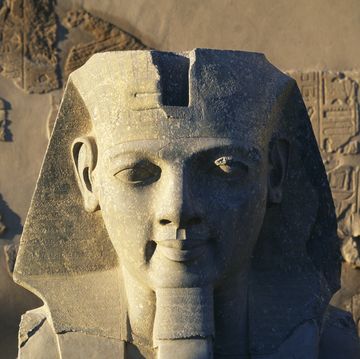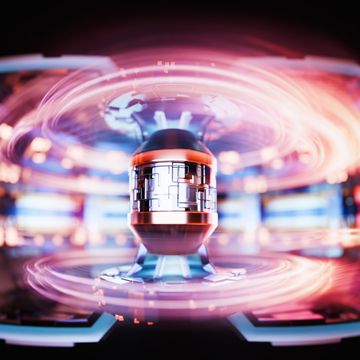- A 14,000-year-old "optical illusion" carving shows how long people have tricked their eyes.
- Ambiguous images like this one, the famous "rabbit or duck," and the Popular Mechanics favorite "rabbit or raven" illusion are perennially puzzling.
- Plasticity, the ability to flexibly think and change, is highest in children and prized in creative adults.
Popular Science has freshly unearthed this 14,000-year-old optical illusion that archaeologists first found in 1973:
The carved stone figure shows a mammoth from one aspect and a bison from another, mirroring the most famous ambiguous image of a rabbit and duck from the 1800s.
Like many optical illusions, these images play on the human brain’s urge for context and turn our first impressions upside down.
Last year, the Popular Mechanics staff lit up over a video showing a creature that's either a rabbit or a raven. You decide:
The classic bird and duck image is an illustration, like many of the other enduring classic optical illusions. You can’t see or scrutinize the texture of feathers or fur, and that’s clearly not the point of an illustration in the first place. The ambiguity itself is the point, and researchers have studied how the regular human experiences and preconceived notions we all carry around influence the way we decide between ambiguous options or fill in missing information.
Children’s brains are, for the most part, much more plastic and less resistant to new and different modes of thinking than the brains of adults. Last year, Sandra Kuhlman, a neuroscience researcher from Carnegie Mellon University, told Popular Mechanics&about how this plasticity ranges from our thought patterns to our senses themselves:
“The brain must learn to see through experience. This is known as a critical period. In the case of vision, there is a developmental window of heightened plasticity in which the neural circuits that process visual scenes solidify their connections based on what the individual experiences in their environment.”
In other words, as our plastic young eyeballs goggle around the world, we don’t just experience the things and places we see—our brains are building scaffolding with the thoughts and context that those things and places represent.
As we get older, that visual circuitry also ends up entrenched with our contextual social thoughts, the weight of our life experiences, and more, until looking at an ambiguous image of a bison or mammoth makes the mammoth (for example) seem to “jump out.” Talking with another person who saw a bison instead is a direct way to confront whatever led us to see a mammoth in the first place.
But plasticity isn’t just for children’s imaginations. It’s a vital portion of an integrative model of creativity, along with the ability to diverge from popular thinking and then synthesize new kinds of ideas. Think of the work of M.C. Escher, where regular- and “real”-looking context sells us on stairways to nowhere and other impossible things.
But do optical illusions represent a way to remind people their brains can still observe that level of ambiguity and make connections?
The answer is certainly for the people who designed them, whether thousands of years ago, or in the 1800s, or even today; finding the exact center where two different things can appear to be each other is a creative talent and a marvel.
Scientists found the 14,000-year-old bison and mammoth illusion in the south of France, not far from the famous caves where some of the world’s oldest cave drawings have been discovered.
This item is a treasure in every sense, but it’s also a reminder that prehistoric humans already had sophisticated inner lives and the desire to both amuse and puzzle their peers with ambiguous art.

Caroline Delbert is a writer, avid reader, and contributing editor at Pop Mech. She's also an enthusiast of just about everything. Her favorite topics include nuclear energy, cosmology, math of everyday things, and the philosophy of it all.
